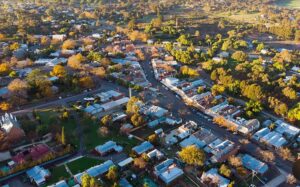The renewable energy sector is rightly proud of the transformation it has managed to achieve in South Australia.
Two decades ago the state’s electricity supply was almost entirely powered by coal and gas. Coal made up 4,000 GWh in 2003 and gas supplied the remaining 6,000GWh.
This year in South Australia, Green Energy Markets projects that renewables will represent around 70% of supply, with wind supplying a bit over 6,000GWh, rooftop solar 2800GWh, large scale solar farms another 1,200GWh, for a total of around 10,000 GWh.
It took two decades, significant investment and a lot of hard work from a wide array of people to get to that 10,000GWh.
I point this out not to rehash what most in the industry already know about South Australia’s remarkable transformation, but to help put in perspective the scale of a backward step our Federal Government is currently contemplating.
This backward step, which was dreamed-up under the prior Morrison Government, involves making available around 12,000 to 13,000GWh of extra renewable energy certificates for purchase by corporations, but without any increase in actual renewable energy generated, and no reduction in Australia’s carbon emissions.
The only conceivable reason from this initiative is to help large polluting facilities like liquified natural gas plants greenwash away their emissions on the cheap.
To explain, at present the government is looking into implementing an initiative begun under the prior Morrison Government known as Guarantee of Origin certification.
At its fundamental core it is actually a very good thing. A range of companies want and hopefully in many cases into the future will have to provide clear transparent evidence about the carbon emissions associated with the production of their products.
As an example, if hydrogen exports ever become a thing (of which there remains considerable doubt) the main reason buyers will seek this product out, instead of just using plain on fossil fuel gas, is because it is supposed to be ideally a zero emission energy product.
However, hydrogen can be produced electrolytically using electricity not just from solar or wind but also from a coal or gas power station. So potential buyers of hydrogen will rightly demand some reliable evidence guaranteeing that the origin of that product was via electricity produced from renewable energy.
In reality though, the main game here isn’t hydrogen, but rather green certification of a range of products in the here and now. It’s also potentially an issue about how exported products, like steel or aluminium, might be treated under carbon border tax adjustment regimes such as the one being implemented in Europe.
It’s important to be aware that Australia already has an excellent and trusted regime for certifying ownership of electricity from renewable energy sources set up under the Renewable Energy Target known as the REC Registry.
Under this regime renewable energy projects are accredited by the Clean Energy Regulator to ensure they really are producing electricity from renewable sources (usually straightforward but can be a bit complicated for bioenergy plants that can also use fossil fuels) and have accurate metering in place.
Once accredited, these projects can create a renewable energy certificate in the REC registry for each megawatt-hour of electricity they produce.
This system has worked extremely well in ensuring electricity retailers met their legal obligations to purchase and grow the level of renewable energy produced in the country to meet the 2020 Renewable Energy Target.
But it has since evolved beyond this mandatory regime to also allow individuals, companies and state governments to purchase and verify to others their purchase of renewable energy voluntarily.
Last year 7,400GWh of renewable energy was voluntarily surrendered. This regime is very helpful for ensuring people do what they say.
For example my firm, Green Energy Markets, produces a subscription publication each and every month where we detail how many certificates each organization holds and also what has been voluntarily surrendered.
That allowed us to see that many water companies were not honoring their commitments to purchase renewable energy and instead were on selling certificates to others.
We can also see that some supermarket retailers were delivering on their renewable energy commitments (Aldi) while others only began to do this very recently, in spite of making announcements with much fanfare several years ago.
While this regime works very well, there are two state-owned enterprises that have felt hard done by and undervalued by this regime – Hydro Tasmania and Snowy Hydro.
When the Renewable Energy Target was originally committed to back in 1997, policy makers concluded that the point of the exercise was to grow the amount of renewable energy so we could reduce our greenhouse gas emissions.
It wasn’t to make it easier for the managers of state-owned enterprises to meet their financial KPIs while doing nothing other than run the hydro power plants the same way they always had.
Therefore, generators existing prior to 1997 would only receive renewable energy certificates if they managed to increase their generation above 1997 baseline levels.
Yet for some reason, as this Guarantee of Origin scheme was developed under the Morrison Government, policy makers lost sight of the whole reason we are so concerned about growing renewable energy.
This isn’t to give some corporate entity a nice green stamp as easily as possible, but to try to avoid dangerous climate change.
This loss of purpose has led us to where we are now, with the proposal that Clean Energy Regulator award new renewable energy certificates to around 12,000 to 13,000GWh of renewable energy being produced by old power stations, many of which were built back in the 1970’s.
Companies classed as Emissions-Intensive and Trade Exposed will be entitled to purchase these extra certificates which they can then use certify their products as green.
In addition, it’s planned that they can be used by these organisations to zero-out their Scope 2 electricity emissions under the Government’s official National Greenhouse and Energy Reporting System.
While advocates for this change suggest it will improve emissions accounting, it will actually disguise initiatives that make emissions worse.
As an example, LNG facilities currently use compressors fueled by methane to liquify the gas so it can be transported overseas by ship.
The emissions from directly burning this methane fall under the scope of the Safeguard Mechanism and LNG facilities will have to offset these emissions as emission baselines under the Safeguard are steadily tightened.
However, if they switch-over these compressors to electric-drive then the LNG facility will no longer be emitting carbon emissions as far as the Safeguard Mechanism is concerned.
The fact that the LNG plant might have just shifted the emissions to a coal power station up the road is ignored by the Safeguard Mechanism because electricity has been excluded from Government plans to tighten Safeguard facility baselines.
To avoid this from happening we really need LNG plants to support the construction of new renewable energy projects to cover their electricity consumption.
But thanks to the Morrison Government’s brainwave, these LNG facilities can instead far more easily and less expensively pretend they are powered by renewable energy through purchasing renewable energy certificates from Snowy Hydro’s old plants.
According to the National Greenhouse and Energy Reporting system the LNG plant’s electricity emissions will be treated as zero. Except if there has been no actual increase in renewable energy, then this increase in electricity demand will in reality have been met by a coal or gas power station increasing their output (which they can readily do because most are significantly underutilized).
There are some people involved in our policy debates who are yet to realise just how challenging a task we face to meet our 2030 emissions and renewable energy goals.
At present we are heavily dependent on very substantial growth of voluntary demand for renewable energy. Even state government initiatives to underwrite renewable energy are heavily relying on voluntary buyers to help ultimately buy the renewable energy they are underwriting via offtake contracts.
A range of large emitters in Australia are rightly facing intense pressure from investors and customers to reduce their emissions.
Many of them will strongly resist this pressure and will happily opt for a quick and dirty way to get these stakeholders off their back. But if we are to reach our 2030 targets we simply can’t afford to let a whole lot of them off the hook.
Having been involved in renewable energy policy for almost the past two decades I can tell you 12,000 to 13,000GWh of demand isn’t something you can afford to just give away.
The initial Renewable Energy Target which built the foundation for the Australian Renewable Energy Industry was 9,500GWh.
During the Tony Abbott period the industry and the environmental movement fought tooth and nail to prevent him from stripping 15,000GWh from the large-scale Renewable Energy Target and unfortunately was forced to concede 8,000GWh.
So far not one of the State Governments’ renewable energy contracting initiatives has delivered us anything close to 13,000GWh of new projects. Total voluntary demand (including state government initiatives) last year was 7,400GWh and maybe with a bit of luck it will reach 10,000GWh for 2023.
We can’t afford to be conceding such a big free kick to heavy emitters, especially this federal government which needs all the help it can get to achieve 82% renewables by 2030.
Tristan Edis is Director of Analysis and Advisory at Green Energy Markets. Green Energy Markets provides analysis and advice to assist clients make better informed investment, trading and policy decisions in energy and carbon abatement markets.
Submissions to the Federal Government’s Renewable Energy Guarantee of Origin consultation close on October 24.








